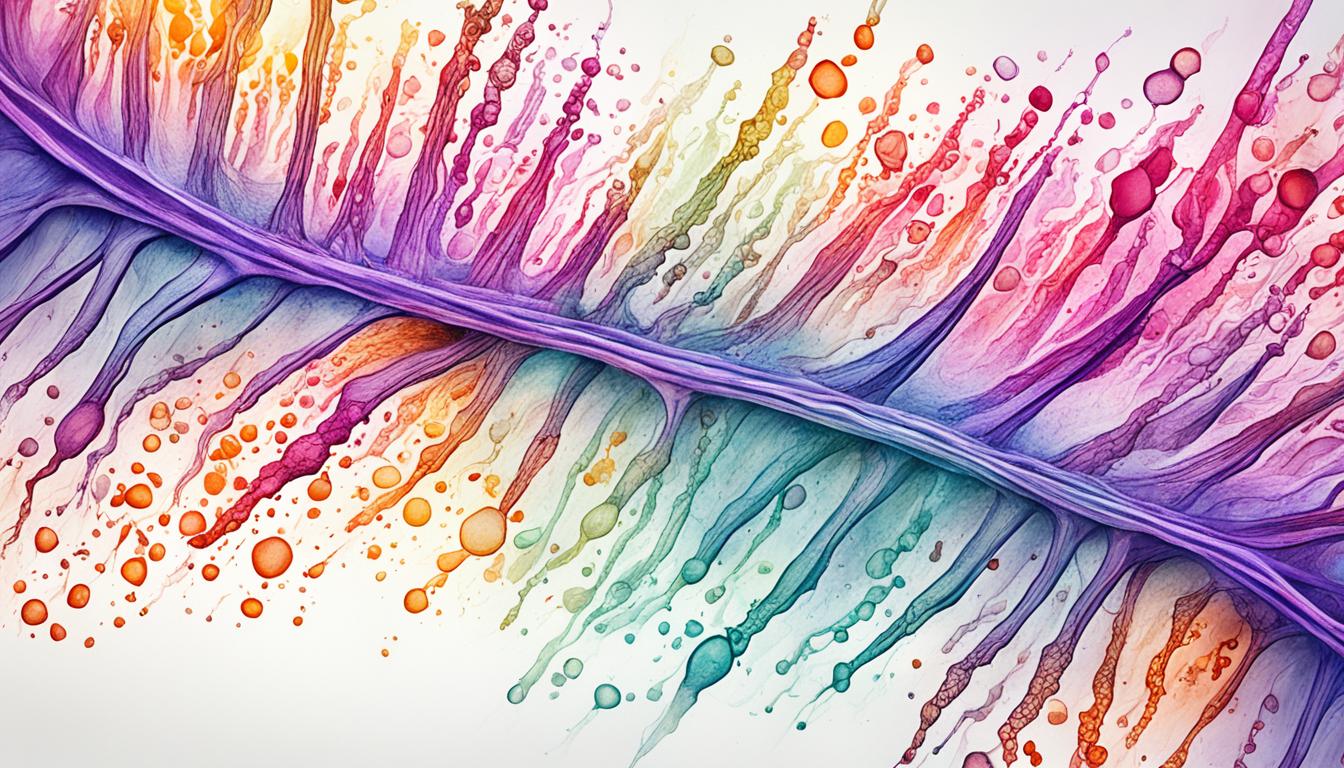Keloid scars can bring a lot of emotional and physical trouble. They grow beyond the injury’s original size. This can lead to a big hit on someone’s self-confidence and happiness. Experts are still learning why keloids happen. They think it’s because of too much collagen being made and too little being broken down in the skin. Genetics are also involved, making some people more likely to develop keloids.
Key Takeaways:
- Keloids are abnormal scars that grow beyond the boundaries of the original injury.
- The exact cause of keloid formation is not fully understood, but it involves an imbalance in collagen synthesis and degradation.
- Genetic factors contribute to the development of keloids in certain individuals.
- Keloid scar disease can have a significant impact on a person’s emotional well-being and quality of life.
- Effective treatment options, such as stem cell therapy, can help manage and improve keloid scars.
Diagnosis and Treatment of Keloid Scars
Diagnosing a keloid scar involves looking at it. Healthcare pros know a keloid by its traits. This includes being thick, raised, and going beyond the injury. Sometimes, a small skin piece is taken to check for cancer.
There are many ways to treat keloids, depending on the scar. Options include surgery, injections, and gels. The choice is made with the patient’s needs in mind.
Wound Care
Good wound care helps handle keloids. It’s key to keep the area clean and moist. Avoid scratching it or putting too much pressure. This can make keloids worse.
Corticosteroid Cream and Injected Medicine
Corticosteroids can be rubbed on keloids to help. They cut down swelling and level the scar. Doctors might also inject them right into the keloid.
Freezing the Scar (Cryotherapy)
Freezing keloids with liquid nitrogen can flatten them. It’s called cryotherapy. You might need a few sessions for it to work fully.
Laser Treatment
Laser therapy can make keloids look better. It targets and remodels the extra scar tissue. It’s done outside a hospital and isn’t surgery.
Radiation Therapy
For big or repeat keloids, radiation might be a choice. It’s focused radiation to soften the keloid. Usually, it’s used with other treatments.
Surgical Removal
Sometimes, cutting out a keloid is needed. The wound is then closed with stitches. Other treatments may be used after surgery to stop new keloids.
Keloids might need different treatments to get better. Seeing a doctor who knows about keloids is the best move. A plan will be set to treat the keloid.
The Future of Keloid Scar Treatment and Self-Care Tips
Scientists and doctors are looking into new ways to treat keloid scars. They’re excited about using stem cells to heal these scars. Stem cells can become many types of cells. This means they might help make healthy skin and lessen keloid scars.
When taking care of keloid scars, how you treat the wound matters. It’s important to keep the area clean and moist. This can lower the chance of scars forming. Using corticosteroid cream or silicone gel may also help keloids look better.
It’s also key to protect keloid scars from the sun. Sun can darken the scar. So, using sunscreen with high SPF is a must. This helps shield the skin and stop darkening of keloids.

